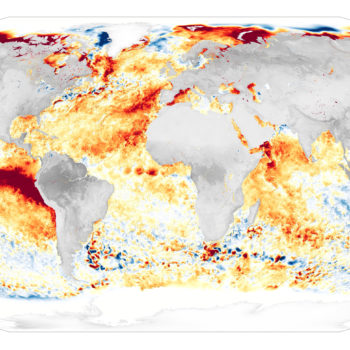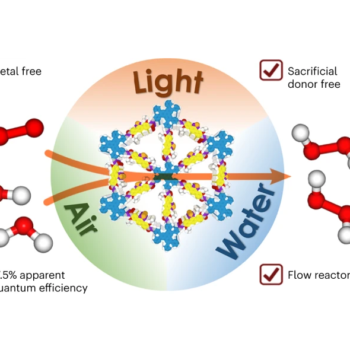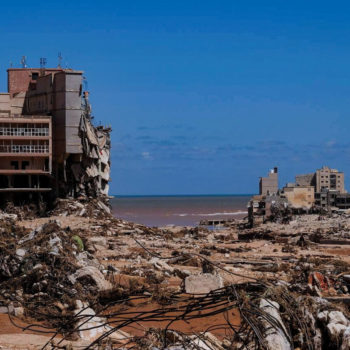|
|
In a groundbreaking initiative, the world’s first trial of using ammonia as a marine fuel has been successfully conducted onboard a Singapore-flagged vessel. The Maritime and Port Authority of Singapore (MPA) recently announced the milestone on its website.
Green Pioneer: Retrofitting and Converting Fortrescue Green Pioneer
The trial took place aboard the Fortescue Green Pioneer, a 3,100 deadweight tonnage (dwt) vessel originally constructed in Indonesia in 2010. Acquired by Fortescue Future Industries in early 2022 from Australia-based MMA Offshore, the vessel underwent a remarkable transformation to accommodate ammonia as a marine fuel.
Initially outfitted with four diesel-electric Cummins main engines, the vessel’s conversion journey commenced in 2022, with rigorous testing conducted at Fortescue’s facility in Perth, Australia. The conversion process gained momentum in July 2023 when retrofit work commenced at Seatrium’s Benoi yard. Two of the vessel’s four engines were modified to enable the use of ammonia in conjunction with diesel, necessitating the installation of sophisticated gas fuel delivery systems, safety protocols, and infrastructure to support seamless operations.
The retrofitted vessel was previewed during the COP28 conference in Dubai, where the Fortescue Green Pioneer’s founder and chairman, Andrew Forrest, made a notable appearance. During the conference, Forrest emphasized the need for global ports to prepare and develop infrastructure conducive to ammonia bunkering.
Advancing Ammonia Bunkering Through Collaborations
Collaborating closely with industry partners, including classification society DNV, fuel supplier Vopak, and research institutes, the Maritime and Port Authority of Singapore (MPA) Singapore prepared meticulously for the trial. Since October 2023, the MPA of Singapore engaged in workshops to fully assess hazards, develop safety protocols, and establish robust mitigation measures for handling ammonia.
Likewise, crew members underwent training, including gas-specific hazardous materials response and safety drills led by the MPA, to ensure they were ready to handle emergencies. They mastered new procedures before starting trials.
Moreover, a safety model for ammonia plumes was created through collaboration between A*STAR’s IHPC, NTU’s MESD, TCOMS, and NUS’s TMSI. This model, designed with specific details of the Fortescue Green Pioneer vessel and considering Singapore’s climate, sea currents, and nearby structures, was essential for guiding operations and enhancing safety.
Ongoing Trials and Future Prospects
According to the MPA’s statement, the initial bunkering operation saw three tons of liquid ammonia being transferred from Vopak’s Banyan Terminal on Jurong Island in Singapore.
The trial was conducted over a span of seven weeks. It included rigorous testing of various aspects of the vessel’s infrastructure, including its ammonia storage systems, piping, fuel delivery mechanisms, engines, and overall seaworthiness.
Following the trial, the vessel was granted permission by the Singapore Registry of Ships and the classification society DNV to utilize ammonia alongside diesel as a marine fuel.
Exploring Ammonia as a Sustainable Shipping Fuel
Although the shipping industry is critical in driving the global economy, facilitating over 80% of the world’s trade by volume, it is one of the largest sources of CO2 emissions.
Chemical and Engineering News reports that most ships are powered by engines using heavy fuel oil (HFO) — a byproduct of refining crude oil. The burning of this fuel emits a significant amount of particulates and is responsible for roughly 3% of worldwide greenhouse gas emissions.
As sustainability becomes an urgent priority, businesses and industries worldwide are urgently seeking ways to become more eco-friendly and reduce their environmental impact.
Ammonia, produced by combining nitrogen from the air with hydrogen, is among the promising alternative fuels being explored by the shipping industry to curb emissions. Acting as a carrier for hydrogen, ammonia holds potential for both power generation and maritime propulsion, supporting the global transition toward cleaner energy solutions.
According to Bureau Veritas Marine and Offshore, using renewable energy to produce ammonia can result in “green ammonia,” a fuel with zero carbon emissions from production to usage. This could provide shipowners with a way to meet the International Maritime Organization’s (IMO) 2050 targets for reducing emissions by offering a fuel option without well-to-wake CO2 emissions.
Ammonia has several benefits as a marine fuel, including:
- Zero-Carbon Emissions: Its main advantage is being a zero-carbon fuel when produced through renewable means, allowing ships to cut their CO2 emissions completely.
- Availability: One of ammonia’s components, atmospheric nitrogen, is abundant and freely accessible.
- Infrastructure: Ammonia, a common commodity, already has a robust storage infrastructure and a global terminal network.
- Technology: Technology for internal combustion engines that run on ammonia is advancing and closer to large-scale deployment than other sustainable alternatives.
Despite its advantages, there are significant challenges with ammonia as a fuel:
- Toxicity: Ammonia is highly toxic to humans and marine life, with a strong smell that can irritate.
- Energy Density: It has about one-third the energy density of conventional fuels, needing larger quantities onboard and reducing cargo ship space.
- Emissions: Although it doesn’t emit CO2 when combusted, it can produce nitrous oxide (N2O), which has a greenhouse effect 270 times greater than CO2.
- Supply: The current supply of green ammonia is limited, and demand from other sectors might drive up costs.
If these drawbacks are effectively managed, ammonia holds strong potential as a sustainable maritime fuel option for the future. Its ability to significantly reduce carbon emissions aligns with global efforts to combat climate change, especially within the shipping industry’s push toward decarbonization.
Other Sustainable Marine Fuels
Ammonia is not the only alternative fuel shipping experts are evaluating to achieve low-emission or zero-emission shipping.
The Office of Energy Efficiency and Renewable Energy (EERE) points out that various alternative marine fuels are under examination. These alternatives leverage different materials, methods, and technologies to convert domestic resources—called “feedstocks”—into energy-rich fuels. These fuels possess the necessary properties and characteristics for safe use in marine engines.
Feedstock types include:
- Forestry and agricultural residues
- Non-food energy crops, such as switchgrass and miscanthus
- Waste oils, fats, and greases
- Wet wastes like manure, sewage sludge
- Landfill gas
- Algae biomass
- Municipal solid waste

Image Source: https://www.energy.gov/eere/bioenergy/sustainable-marine-fuels
Additionally, the concept of “drop-in fuels” is gaining traction. These are fuels capable of being transported via the same infrastructure as traditional petroleum products. Examples include biodiesel, renewable diesel, bio-oil, bio-crude, and hydrotreated vegetable oil. Emerging marine biofuels are also being explored for their potential to offer immediate reductions in greenhouse gas (GHG) emissions, marking a promising direction in the quest for sustainable maritime operations.
Conclusion
The inaugural use of ammonia as a marine fuel onboard a Singapore-flagged vessel heralds a new era of environmentally conscious shipping practices. As stakeholders continue to collaborate and invest in research and development, the potential for ammonia and other sustainable marine fuels to play a pivotal role in decarbonizing the maritime sector becomes increasingly evident. With this trial, along with technological innovation and improvements in regulatory frameworks, the journey toward a cleaner, more sustainable future for global shipping gains momentum.












